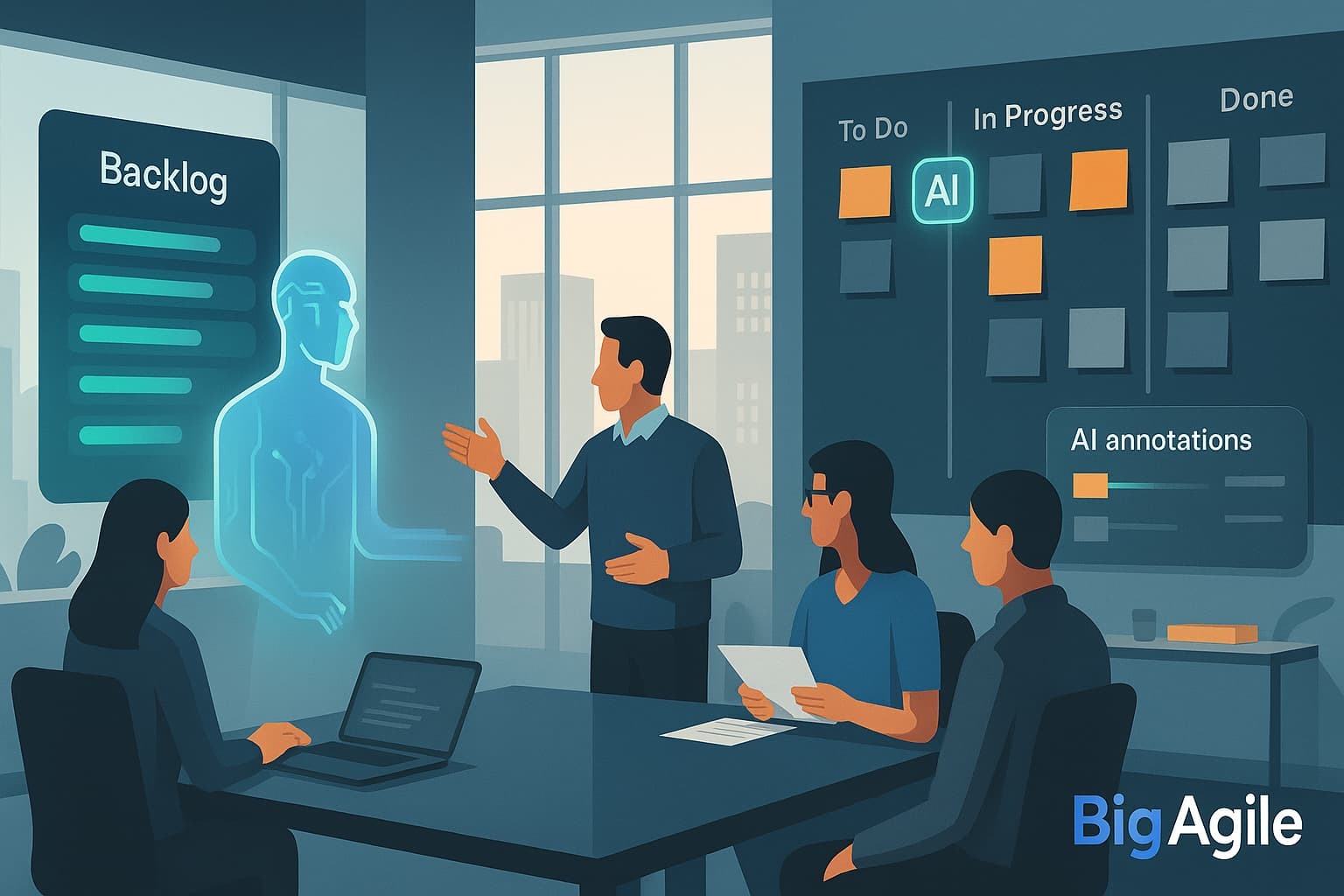
It started as a small experiment.
A Scrum team decided to trial an AI work-item recommender to speed up backlog refinement. Within a few sprints, something subtle but significant began to happen: discussions were shorter, fewer alternative ideas were raised, and the “why” behind each story was getting lost in the shuffle.
The “bot’s” suggestions were solid; they aligned with historical velocity and stakeholder priorities, but the team’s collaborative energy seemed to fade. Instead of debating trade-offs or exploring novel solutions, members quietly accepted the AI’s top picks. The tool had delivered on speed, but it was reshaping team behavior in ways no one expected (or wanted).
What.
AI’s role in Agile is often framed as automation, faster test runs, quicker estimates, and automated defect triage. Those are valuable, but they barely scratch the surface of its potential.
When applied thoughtfully, AI becomes an adaptive collaborator in iterative development, capable of:
Backlog refinement – Suggesting prioritization based on customer value, dependency mapping, and predicted delivery effort.
Forecasting – Generating data-driven release predictions using historical sprint data and trend analysis.
Decision-making support – Flagging anomalies, surfacing risks, and recommending experiments to improve flow.
This isn’t about replacing events/meetings with code. It’s about integrating a dynamic, learning system into the feedback loops that drive Agile.
So What.
The danger comes when teams shift from using AI to following it. Without intention, AI can turn into an unchallenged authority, creating two big risks:
Overreliance – The team stops exploring divergent ideas because “the AI already did the analysis.”
Noise-chasing – AI metrics and predictions can tempt leaders to react to every blip, even when variation is normal.
As Mark Graban notes in Measures of Success, not every fluctuation in a chart signals a meaningful change. Sometimes we are starving so much for the data we focus on the wrong thing. When AI multiplies the data we see, the ability to separate signal from noise becomes even more critical. Otherwise, we risk burning energy on phantom problems while missing the real opportunities for improvement. It's not as easy as "just start tracking the data". We have to become discern-ers of data; like never before.
Now What.
To integrate AI responsibly into an agile team's delivery processes:
Frame AI as a hypothesis generator, not a decision-maker – AI output is the start of a conversation, not the end of it.
Set explicit guardrails – Define what decisions AI can inform, and which require human judgment.
Maintain collaborative rituals – Refinement, planning, and retrospectives are still human-led. Use AI insights to enrich the discussion, not replace it.
Validate with multiple inputs – Check AI suggestions against customer feedback, team experience, and empirical results. Don't have those? Get them!
When done well, AI becomes a force multiplier for agile’s core strengths, speed of learning, adaptability, and customer focus, rather than a shortcut that erodes them.
Let's Do This!
AI in agile isn’t just a faster engine for the same old train; it’s a shift in how we navigate the journey. By treating AI as an adaptive collaborator rather than an automation upgrade, we can amplify our feedback loops, make sharper decisions, and focus human creativity where it matters most.
The goal isn’t to do "Agile" faster. It’s to learn and adapt smarter, with AI as a trusted partner in the process.